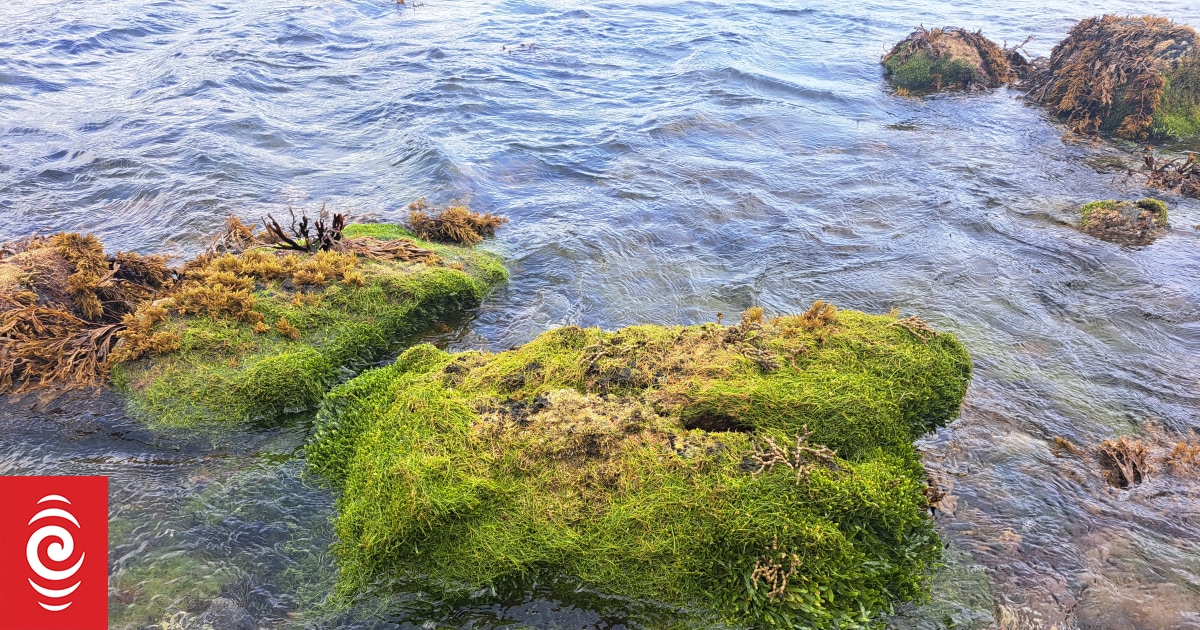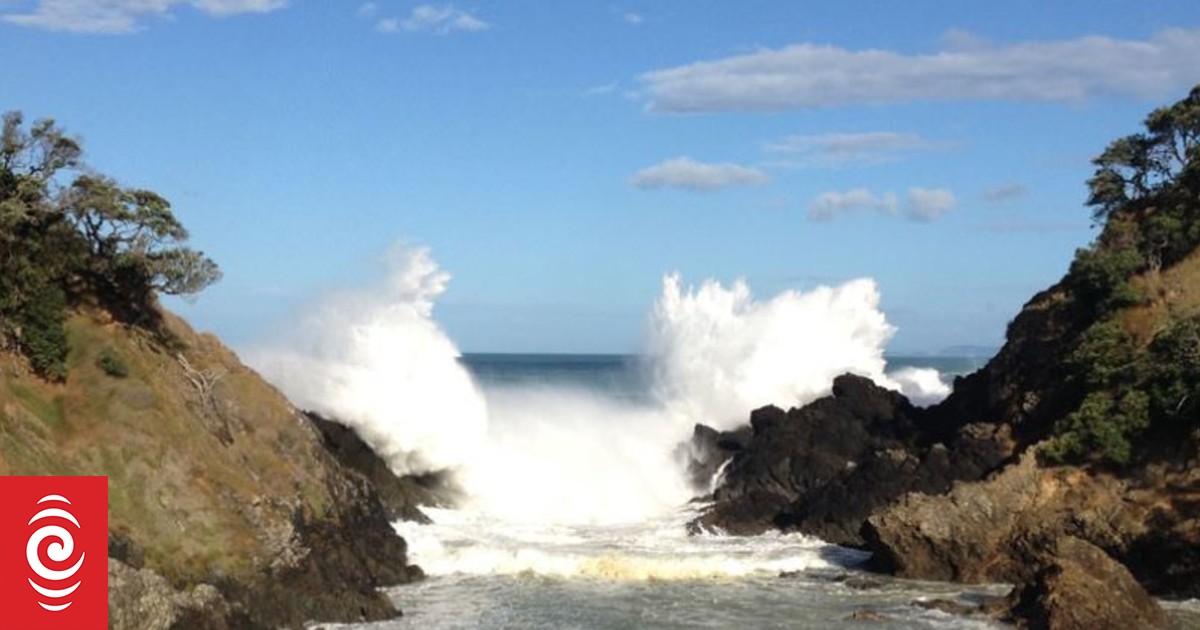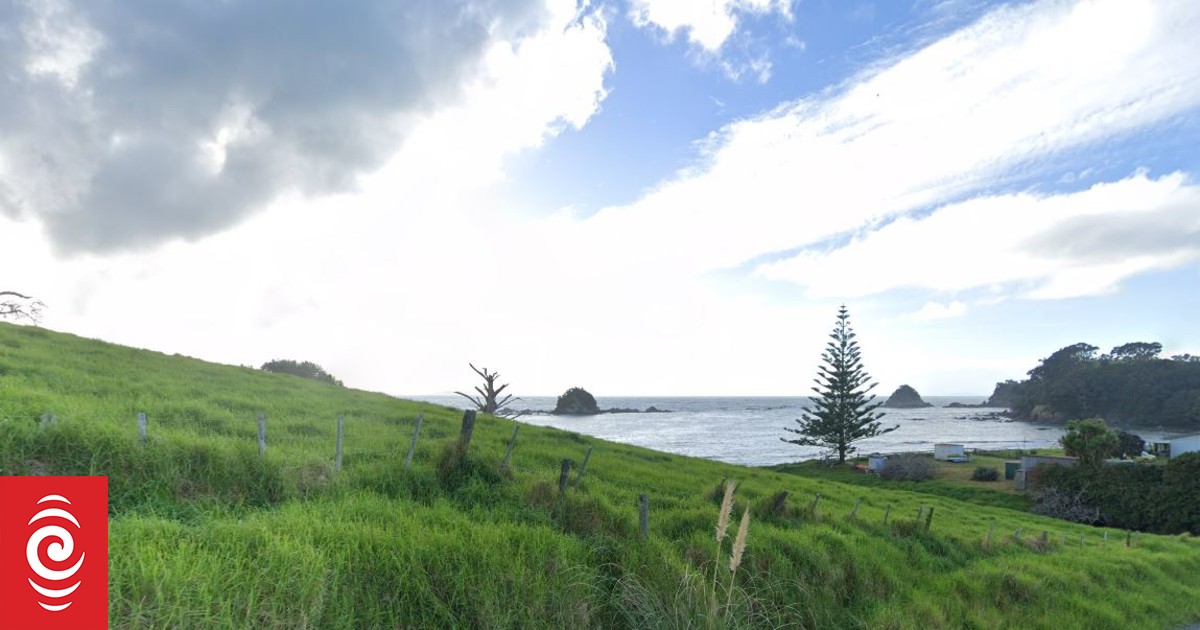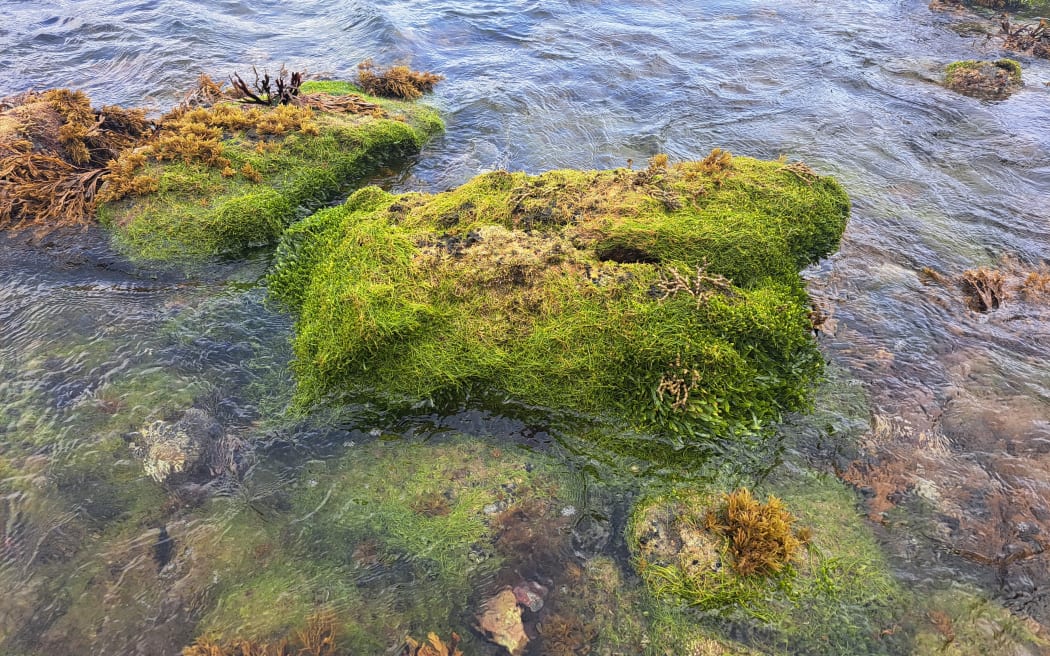
Caulerpa covers rocks in Okipu bay, Great Barrier Island.
Photo: Luka Forman
New boat moorings could be the answer for Great Barrier Island businesses struggling with a lack of tourism due to anchoring restrictions.
The restrictions are in place around most of the island as a measure aimed at stopping the spread of the invasive seaweed caulerpa.
The island’s existing moorings were full, so boaties who wanted to visit had nowhere to secure their boats, which local businesses said had been a huge blow to island’s economy.
In previous years, Tryphena Bay to the south of Great Barrier Island had been a hive of activity where boaties would anchor in the harbour and visit local shops.
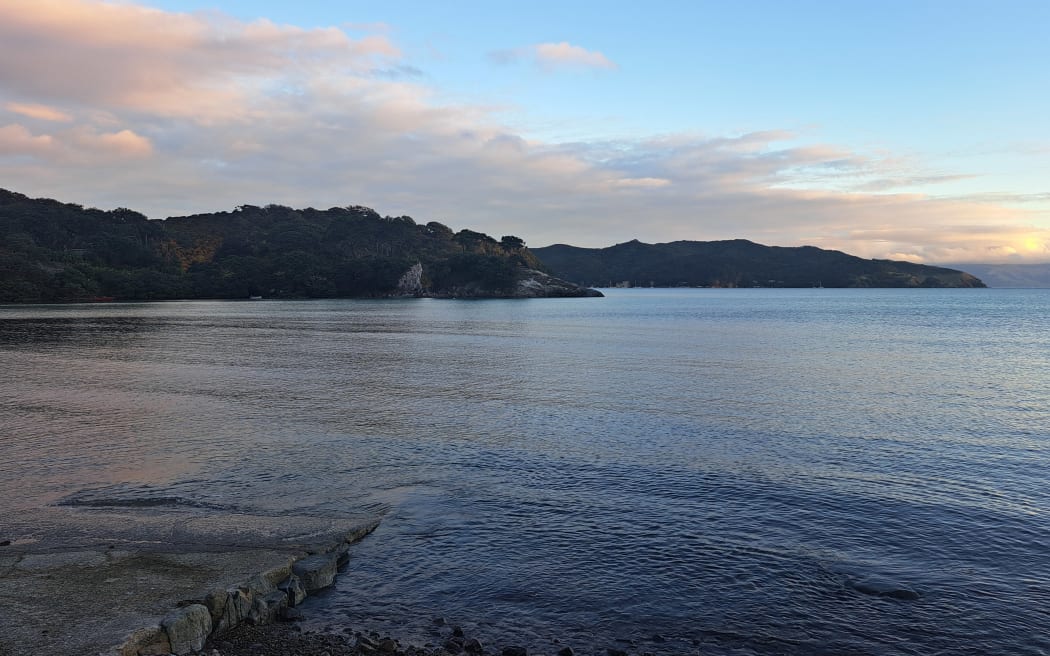
Tryphena bay on Great Barrier Island.
Photo: Luka Forman
But in 2021, rules were put in place restricting where vessels could anchor, to stop the spread of the invasive seaweed caulerpa.
Pa Beach Cafe owner Rochelle Winger said the lack of visiting boaties had been tough for her business.
“It’s pretty scary because we have people that we have to look after. We’ve got people that work for us – people that need money, they need to pay their rent.
“And same with us, we’ve got a family and we want to be able to afford to pay our rent.”
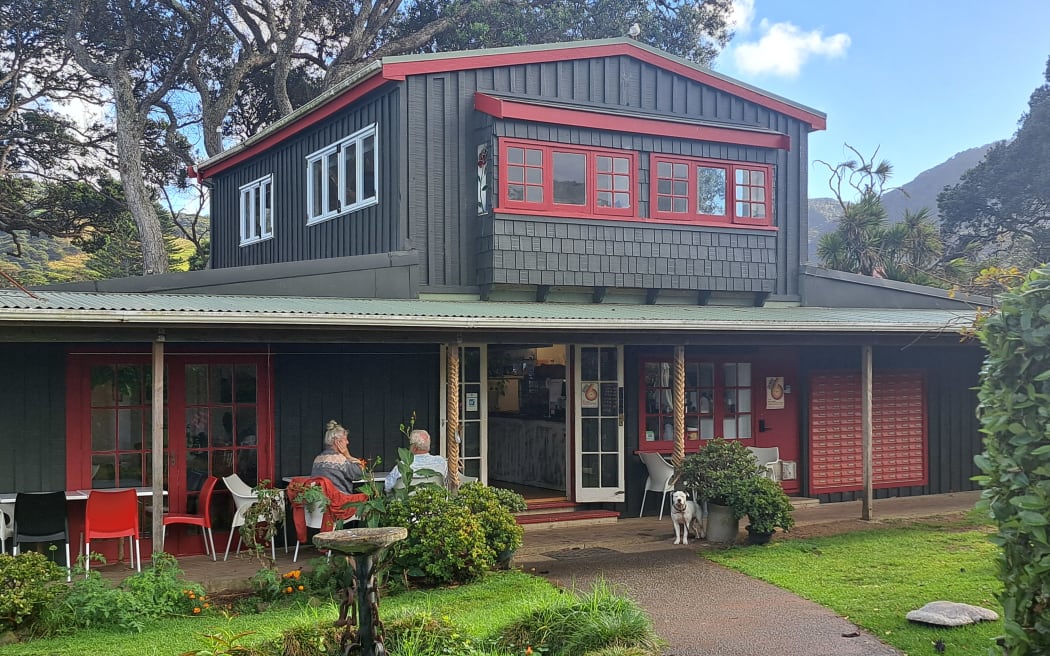
Pa Beach Cafe on Great Barrier Island.
Photo: Luka Forman
Protecting the island’s marine life was very important to locals on the Barrier, she said.
“It’s a real Catch-22 because on the one hand, we want the tourism, but then on the other hand we need our seafood and we want to take care of our ocean.
“So we’re kind of stuck of in the middle of what do we do.”
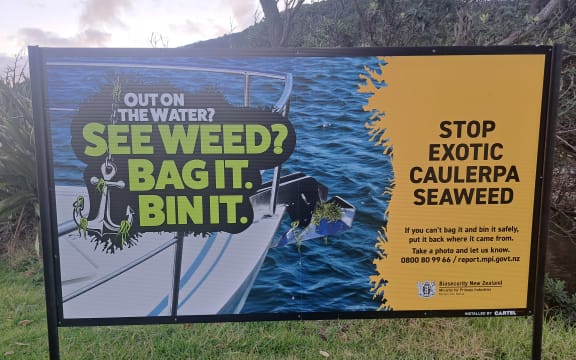
Warning sign about Caulerpa on Great Barrier Island
Photo: Luka Forman
Exotic caulerpa can spread quickly across the seabed, creating a thick, mossy carpet that smothers native marine life.
The weed is thought to spread when small amounts get caught on anchors or fishing and diving equipment, then moved to other locations.
Auckland deputy mayor Desley Simpson hoped to strike a balance on the issue by expanding the island’s mooring zones to bring in more boaties.
“Where there’s a will, I believe there can be a way. But my first priority is the environment and that the protection will stop caulerpa any further than what is happening at the moment.”
She was hoping to arrive at a solution after meeting with the Auckland Harbourmaster next week, adding there were “quite a few options in this space”.
Aotea / Great Barrier local board chairperson Izzy Fordham said putting in new moorings could be a win-win.
“We’ve got some evidence of how it works in Australia; they can be booked online, so it could be a revenue gain as well. Helping the community and helping those boaties also.”
Marilyn Stephens is a trustee of Ngāti Rehua-Ngatiwai ki Aotea, the tangata whenua of the island.
She said the iwi had been monitoring boats around Aotea, and not all of them were following the anchoring rules.
“We’ve traced a boat – a superyacht – and it’s come into Barrier on the west side, anchored, [then] it’s gone round to the east side and it’s anchored. And then it [went] right round past the north edge of the island to Mangawhai, so how can you stop them?
“These are superyachts that come from overseas. We don’t know what they’re doing.”
Stephens wanted to see more action from the government in the fight against caulerpa, saying there had not been enough over the last three years.
“If they don’t do something tangible, one of our biggest industries will be impacted.”
Dwain Hindriksen, controller for the Ministry for Primary Industries’ caulerpa response, said around $11 million had been allocated to control the weed, including $5 million allocated earlier this year.
That included a project to remove caulerpa through diver-assisted suction dredging in Port Fitzroy to the north of Great Barrier and elsewhere in the Hauraki Gulf.
Divers are expected to be in the water next month.
MPI had also invested in diver surveillance, expert advice, public information campaigns and compliance monitoring.

